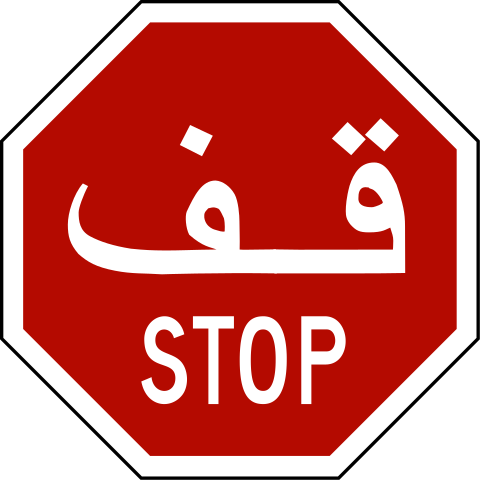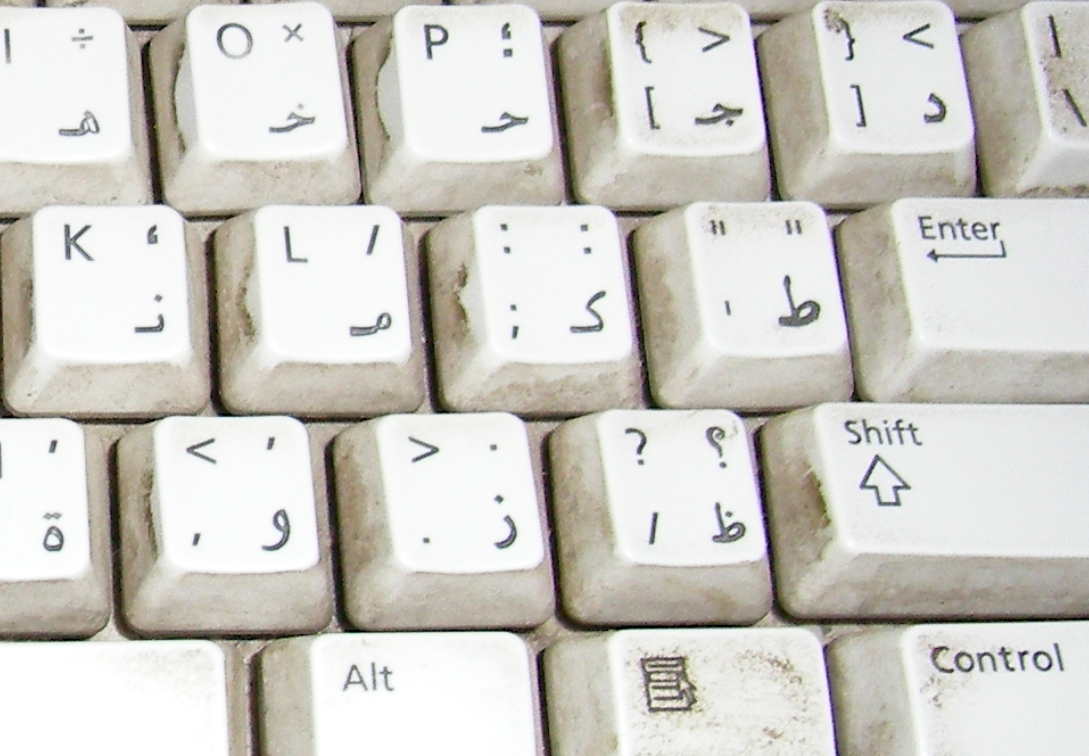1.1: The Arabic Al phabet الحروف العربية
- Page ID
- 151308
In this section, you will be able to:
- Explore the Arabic Alphabet, its names, and its shapes.
- Learn about the Arabic Language.
- Write your name.
Arabic Alphabet
Introduction
The Arabic language is among the top six of the world's major languages. As the language of the Quraan, the holy book of Islam, it is also widely used throughout the Muslim world. However, the common misconception about Arabs is people think that every Arab must be a Muslim, and that every Muslim must be an Arab, which is just not true. There are Christian Arabs, Jewish Arabs, Arab Druze, and Arabs who subscribe to faiths beyond these.
The Arabic language belongs to the Semitic group of languages, including Hebrew and Amharic. Classical Arabic فصحى "Fuṣḥa" is the language found in the Quraan and used from the period of Pre-Islamic Arabia to the Abbasid Caliphate. The Arabic language is the official language for twenty-two countries spreading from western Asia to North Africa, from the Indian Ocean in the east to the Atlantic Ocean in the west.
An adapted form of Fusha, known as Modern Standard Arabic (MSA), is used nowadays in books, newspapers, on television and radio, taught in schools, and in conversations between educated Arabs from different countries (for example, at international conferences). Local dialects vary considerably, for example, a Moroccan might have difficulty understanding a Syrian, even though they both speak the same language. Other languages – such as Persian, Urdu, and Malay – use adaptations of the Arabic script. Moreover, many Arabic words have been borrowed by other languages.
Arabic Alphabet
The Arabic language system writing is different from English. Arabic is written and read from right to left, unlike English, which is written and read from left to right. There are 28 letters in Arabic and 26 letters in English. The Arabic alphabet of 28 letters is created by placing various combinations of dots or symbols above or below the letters. The script in the Arabic language is written in cursive, and there is no differentiation between the upper and the lower case in Arabic like in English. Arabic letters have four shapes, and each shape is distinguished by its location. Locations of the letters are original, initial, medial, and ending which determine the shape of the letter. Arabic letters are connected except for six letters which are only joined with the preceding letter and marked with an asterisk (*) in the table below. We call these letters one-way connectors. In addition, Arabic sounds use a wider range of mouth and throat positions than English. Arabic sounds use five major articulation places which are the empty space inside the mouth, the throat, the tongue, the two lips, and the nasal cavity.
Arabic Letters Shapes and Sounds in English
| Name of the letter | The Counterpart Sound in English | Original Shape | Initial Shape | Medial Shape | Final Shape |
|---|---|---|---|---|---|
| Alif |
A |
* ا | ا | ــا/ ا | ــا/ ا |
| Baa | B | ب | بــ | ــبــ | ــب |
| Taa | T | ت | تــ | ــتــ | ــت |
| Thaa | Th (like the sound of "th" in Three) | ث | ثــ | ــثــ | ــث |
| Jeem | J | ج | جــ | ــجــ | ــج |
| H'aa | H (sound of h with friction) | ح | حــ | ــحــ | ــح |
| Khaa | Kh (This sound does not exist in English) | خ | خــ | ــخــ | ــخ |
| Daal | D | * د | د | ــد/ د | ــد/ د |
| Thaal | Th (like the sound of "th" in That) | * ذ | ذ | ــذ/ ذ | ــذ/ ذ |
| Raa | R | * ر | ر | ــر/ ر | ــر/ ر |
| Zay | Z | * ز | ز | ــز / ز | ــز / ز |
|
Seen |
S | س | ســـ | ــســ | ــس |
| Sheen | sh | ش | شـــ | ــشــ | ــش |
| Saad | S (deep s) | ص | صــ | ــصــ | ــص |
| Daad | D (deep d) | ض | ضــ | ــضــ | ــض |
| Tuaa | T (deep t) | ط | طــ | ــطــ | ــط |
| Dhaa | Dh (deep "th") | ظ | ظــ | ــظــ | ــظ |
| Aein |
a' |
ع | عــ | ــعــ | ــع |
| Ghien | Gh | غ | غــ | ــغــ | ــغ |
| Faa | F | ف | فــ | ــفــ | ــف |
| Qaaf | Q | ق | قــ | ــقــ | ــق |
| Kaaf | K | ك | كــ | ــكــ | ــك |
| Laam | L | ل | لــ | ــلــ | ــل |
| Meem | M | م | مــ | ــمــ | ــم |
| Noon | N | ن | نــ | ــنــ | ــن |
| Haa | H | هـ/ ه | هــ | ــهــ | ــه |
| Waw | Wh | * و | و | ــو / و | ــو/ و |
| Yaa | Y | ي | يــ | ــيــ | ــي |
Watch this video, listen to the names of the letters, and try to repeat after him to learn the letters.
Also, watch this video, listen to the names of the letters, and try to repeat after him to learn the letters.
Practice learning the one-way connectors letters.
Practice learning the Arabic Letters
Look at the picture and name the letters, and name the Arabic letters.

- Answer
-
The letters are Qaaf and Faa.
Write /type your name on your notebook based on the Arabic letters' sounds and shape table.


